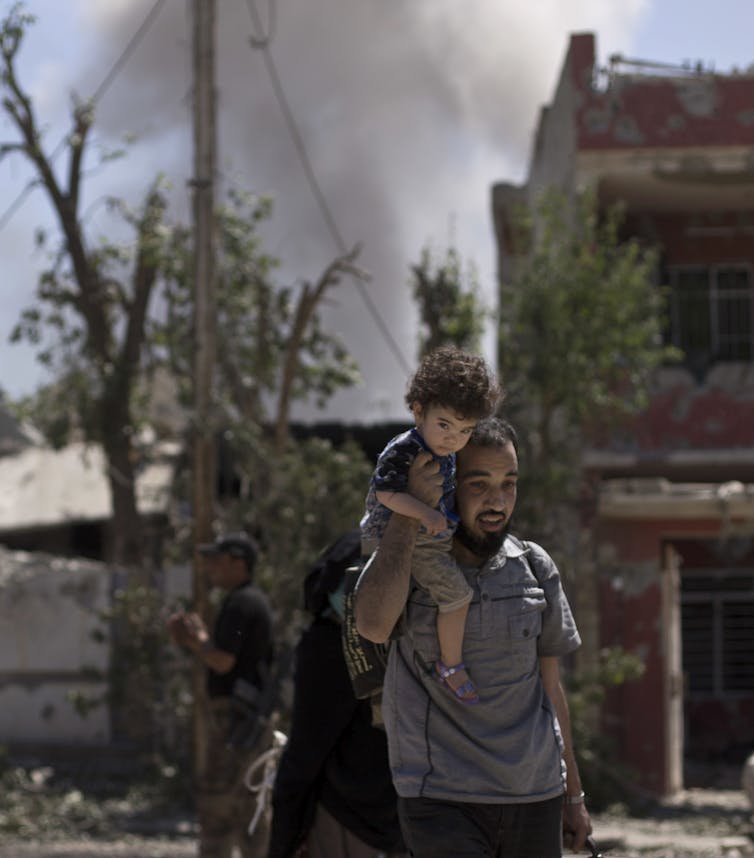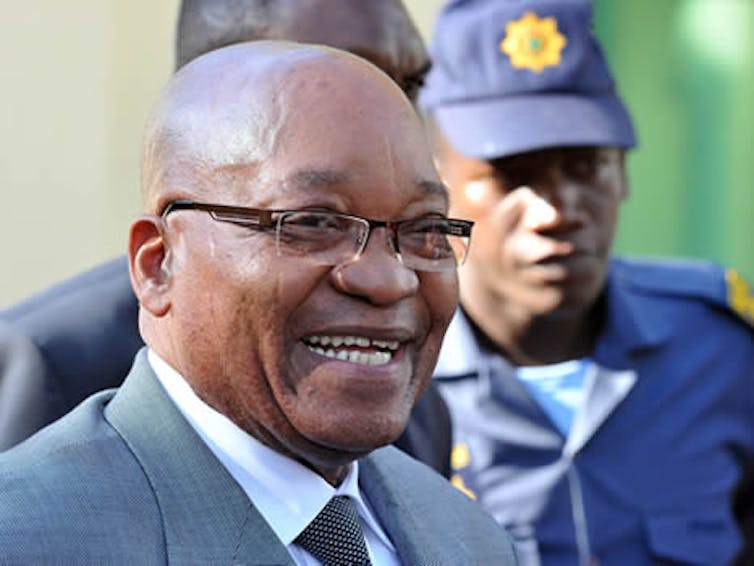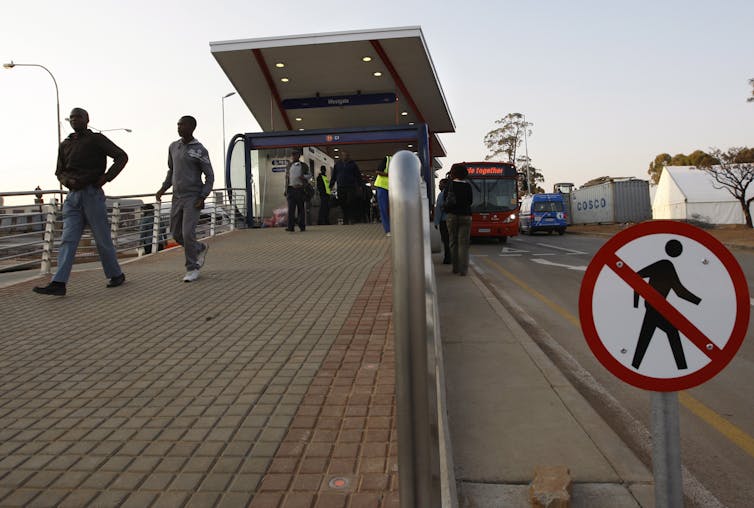
Smoke from an airstrike rises in the background as a man flees during fighting between Iraqi special forces and IS militants in Mosul, Iraq, on May 17, 2017.
AP Photo/Maya Alleruzzo
When President Donald Trump took office in January, it was unclear whether the bombast from his campaign would translate into an aggressive new strategy against terrorism. At campaign rallies he pledged to “bomb the hell” out of the Islamic State. He openly mused about killing the families of terrorists, a blatant violation of the Geneva Conventions, which prohibits violence against noncombatants.
Ten months into his presidency, a clearer picture is emerging. The data indicate several alarming trends.
According to research from the nonprofit monitoring group Airwars, the first seven months of the Trump administration have already resulted in more civilian deaths than under the entirety of the Obama administration. Airwars reports that under Obama’s leadership, the fight against IS led to approximately 2,300 to 3,400 civilian deaths. Through the first seven months of the Trump administration, they estimate that coalition air strikes have killed between 2,800 and 4,500 civilians.
Researchers also point to another stunning trend – the “frequent killing of entire families in likely coalition airstrikes.” In May, for example, such actions led to the deaths of at least 57 women and 52 children in Iraq and Syria.
The vast increase in civilian deaths is not limited to the anti-IS campaign. In Afghanistan, the U.N. reports a 67 percent increase in civilian deaths from U.S. airstrikes in the first six months of 2017 compared to the first half of 2016.
The key question is: Why? Are these increases due to a change in leadership?
Delegating war to the military
Experts offer several explanations.
One holds that Trump’s “total authorization” for the military to run wars in Afghanistan and against IS has loosened Obama-era restrictions and increased military commanders’ risk tolerance. Micah Zenko of the Council on Foreign Relations notes: “Those closer to the fight are more likely to call in lethal force and are less likely to follow a value-based approach.”
In other words, an intense focus on destroying IS elements may be overriding the competing priority of protecting civilians. Because Trump has scaled back civilian oversight and delegated authority to colonels rather than one-star generals, the likely result is higher casualties.
Urban battlefield?
A second explanation points to the changing nature of the counter-IS campaign. The Pentagon contends that the rise in casualties is “attributable to the change in location” of battlefield operations towards more densely populated urban environments like Mosul and Raqqa.
This is a partial truth. While urban warfare has increased, Trump’s team has substantially escalated air strikes and bombings. According to CENTCOM data, the military has already used 20 percent more missiles and bombs in combined air operations in 2017 than in all of 2016. One notable airstrike in March, for example, killed 105 Iraqi civilians when U.S. forces dropped a 500-pound bomb in order to take out two snipers in Mosul. In fact, a Human Rights Watch analysis of bomb craters in West Mosul estimates that U.S. coalition forces are routinely using larger and less precise bombs – weighing between 500 and 1,000 pounds – than in prior operations. Finally, the urban battlefield explanation also does not account for increased civilian deaths in Afghanistan from airstrikes, where the environment has remained static for several years.
Pressure from the president
A third explanation of higher civilian casualties is that aggressive rhetoric from the president is inadvertently pressuring the military to take more risks and to deprioritize protecting civilians.
As former Assistant Secretary of State Tom Malinowski observes: “If your leaders are emphasizing the high value of Raqqa and Mosul, while saying less about the strategic and moral risks of hurting civilians, it’s going to affect your judgment.” Words matter, especially coming from the commander-in-chief. In the face of such aggressive rhetoric, it should not come as a surprise that military officers feel encouraged – if not indirectly pressured – to take greater risks.
Unfortunately, the increased trend of civilian casualties is unlikely to diminish. In fact, signs abound that the White House is developing a new set of policies and procedures that will authorize more sweeping discretion to the military. In September, The New York Times reported that White House officials were proposing two major rules changes. First, they would expand the scope of “kill missions” and allow for the targeting of lower-level terrorists in addition to high value targets. Second – and more notably – they would suspend high-level vetting of potential drone attacks and raids.
These changes represent a sharp about-face. The Obama administration carefully crafted a deliberate set of rules guiding the use of force. In 2013, Obama released the Presidential Policy Guidance for Approving Direct Action Against Terrorist Targets (PPG), which created specific rules for determining when the use of force against terrorists was legally justified.
Then, in 2016, Obama issued an executive order on civilian harm that established heightened standards to minimize civilian casualties from military actions, and required the public release of information pertaining to strikes against terrorist targets.
While the latest actions from the Trump administration stop short of reversing Obama-era restraints, they are unsettling steps in the opposite direction. For example, it appears for now that the White House will preserve the “near certainty” standard, which requires commanders to have near certainty that a potential strike will not impact civilians. But this could change over time.
One senior official quoted in The New York Times article bluntly asserts that the latest changes are intended to make much of the “bureaucracy” created by the Obama administration rules “disappear.” As the White House dissolves the existing bureaucracy and relinquishes civilian oversight, Trump is embarking on a slippery slope that will potentially lead to major diminutions of civilian protection.
The current battle to take the Syrian city of Raqqa is emblematic of the stakes at hand. The U.S. is leading a punishing air war to soften IS defenses. In August, U.S. forces dropped 5,775 bombs and missiles onto the city. For context, this represented 10 times more munitions than the U.S. used for the whole of Afghanistan in the same month and year. The resulting civilian toll has been gruesome. At least 433 civilians likely died in Raqqa due to the August bombings, more than double the previous month’s total. Since the assault on Raqqa commenced on June 6, more than 1,000 civilians have been reported killed.
U.N. human rights chief Zeid Ra’ad Al Hussein cautions that the intense bombardment has left civilians caught between IS’s monstrosities and the fierce battle to defeat it. Zeid insists that “civilians must not be sacrificed for the sake of rapid military victories.”
Steven Feldstein, Frank and Bethine Church Chair of Public Affairs & Associate Professor, School of Public Service, Boise State University
This article was originally published on The Conversation.







 Patricia
Mariben shows the remains of her outside toilet. Running water and
sanitation has become a problem for a number of residents. Photo: Ihsaan
Haffejee
Patricia
Mariben shows the remains of her outside toilet. Running water and
sanitation has become a problem for a number of residents. Photo: Ihsaan
Haffejee Laerskool Protearif in Krugersdorp was extensively damaged and has had to be closed. Photo: Ihsaan Haffejee
Laerskool Protearif in Krugersdorp was extensively damaged and has had to be closed. Photo: Ihsaan Haffejee